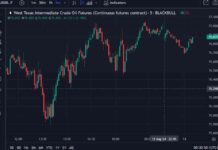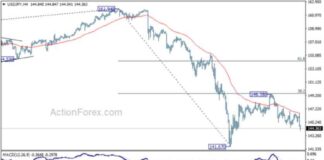The dollar index recently saw a correction following four weeks of consecutive gains. This is a common occurrence when national currencies and bond markets face pressure ahead of important elections. While the dollar is typically considered a safe haven in times of market turmoil, gold and cryptocurrencies have temporarily taken on that role. It’s important not to get too carried away with the idea of a dollar crash or a catastrophic U.S. debt default, as this sentiment has negatively impacted many investors today.
Rather than viewing the DXY decline as a sign of a major crisis, it may be more reasonable to see it as a pullback after a month of growth. The tactical targets for this correction are around 103.8 and 102.8. The former represents 76.4% of the initial advance and the 50-week moving average, while the latter signifies a pullback to 61.8% of the advance, potentially providing a recharge for buyers.
Meanwhile, gold has been on a winning streak for the past four weeks, with the last three weeks seeing regular updates to all-time highs. Futures prices have surpassed $2800 per troy ounce, while spot prices have slightly slowed down as they approached this level. The current rally began in October of last year following initial signs of a monetary policy shift, resulting in a 50% increase in price in less than thirteen months.
The RSI index for gold on a weekly basis has crossed the 80 mark, a rare occurrence that has only happened six times in the last fifteen years. Previous instances of such high RSI levels have been followed by corrections, ranging from 5% to 20%. However, it’s important to note that trying to predict a correction before the asset returns from overbought territory can be challenging, as price fluctuations can be highly volatile due to margin calls from short positions.
In conclusion, while the dollar and gold are experiencing fluctuations and corrections in the market, it’s essential for investors to stay informed and cautious in their decision-making. Keeping an eye on key indicators and understanding market trends can help navigate the uncertainties and opportunities that arise in the financial landscape.

















